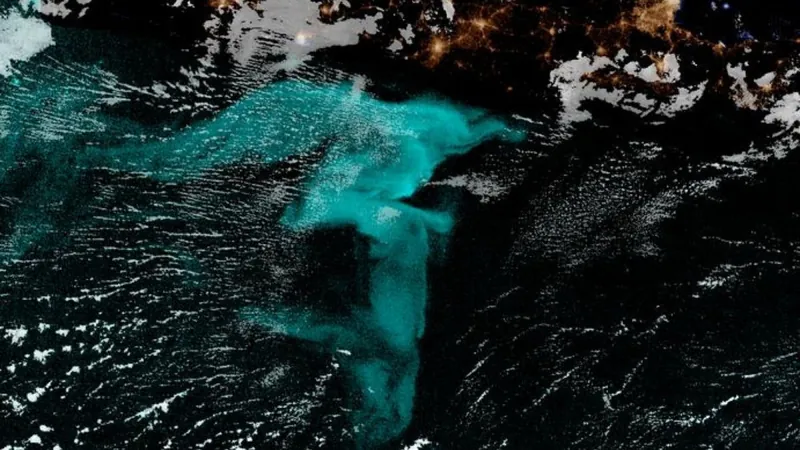
Unlocking the Secrets of Milky Seas: Nature's Mysterious Glowing Phenomenon
2025-04-16
Author: Daniel
What Are Milky Seas?
Imagine a vast ocean glowing eerily like a blanket of fresh snow under a pitch-black sky—this awe-inspiring sight is what sailors have reported encountering for centuries in a phenomenon known as 'milky seas'. In 1854, a sailor described such a scene, mistaking the otherworldly glow for an ominous herald of doom.
A Dance of Bioluminescence
This enchanting glow is linked to bioluminescence, where living organisms emit light via chemical reactions. But even with modern science, the full extent of this phenomenon remains a riddle waiting to be solved. Enter researchers at Colorado State University (CSU), who have devised a groundbreaking database that integrates 400 years of sailors’ accounts with contemporary satellite observations.
Professor Steven Miller, a co-author of the recent study, remarks, "Milky seas are remarkable expressions of our biosphere, highlighting unexplored links between minute microbes and global ecological roles. This new database helps bridge the gap between age-old folklore and scientific insight."
The Mystery of Their Origins
Milky seas display a spectrum of colors—from haunting white to brilliant green and ghostly gray to vibrant turquoise. These radiant expanses can stretch over 100,000 square kilometers and persist for weeks, far outshining the typical glimmers of bioluminescent plankton that often captivate our imagination.
Most likely caused by the luminous bacteria Vibrio harveyi, these lights are notoriously elusive, primarily appearing in remote Indian Ocean locales. The rare occasions on which scientists managed to capture this phenomenon limit their ability to study its biological implications.
The Climate Connection
The new database reveals that milky seas frequently appear in the Arabian Sea and Southeast Asia, often connected to climate patterns like the Indian Ocean Dipole and El Niño Southern Oscillation. These climate events affect global weather, raising questions about the deeper relationship between milky seas and changing oceanic conditions.
Justin Hudson, a PhD student at CSU, explains that nearly 60% of these dazzling displays are observed near Northwest Indian Ocean regions, particularly around Somalia and Socotra, Yemen. Understanding these links may unveil how milky seas impact carbon and nutrient movement across the Earth.
Implications for Ecosystems
The significance of milky seas goes beyond curiosity; they may impact local fisheries and ocean health. Hudson indicates that these glowing areas demonstrate substantial biological diversity, crucial for the local economy.
Miller cautions that milky seas could signal either a thriving ecosystem or a troubled one, as the bacteria linked to these phenomena can harm fish and crustaceans. With this newly compiled data, researchers can move beyond serendipitous discoveries to actively investigate what milky seas mean for the environments in which they occur.
In conclusion, the wonders of milky seas invite us to explore the depths of our oceans and reconsider the intricate balance of life beneath the waves.



 Brasil (PT)
Brasil (PT)
 Canada (EN)
Canada (EN)
 Chile (ES)
Chile (ES)
 Česko (CS)
Česko (CS)
 대한민국 (KO)
대한민국 (KO)
 España (ES)
España (ES)
 France (FR)
France (FR)
 Hong Kong (EN)
Hong Kong (EN)
 Italia (IT)
Italia (IT)
 日本 (JA)
日本 (JA)
 Magyarország (HU)
Magyarország (HU)
 Norge (NO)
Norge (NO)
 Polska (PL)
Polska (PL)
 Schweiz (DE)
Schweiz (DE)
 Singapore (EN)
Singapore (EN)
 Sverige (SV)
Sverige (SV)
 Suomi (FI)
Suomi (FI)
 Türkiye (TR)
Türkiye (TR)
 الإمارات العربية المتحدة (AR)
الإمارات العربية المتحدة (AR)